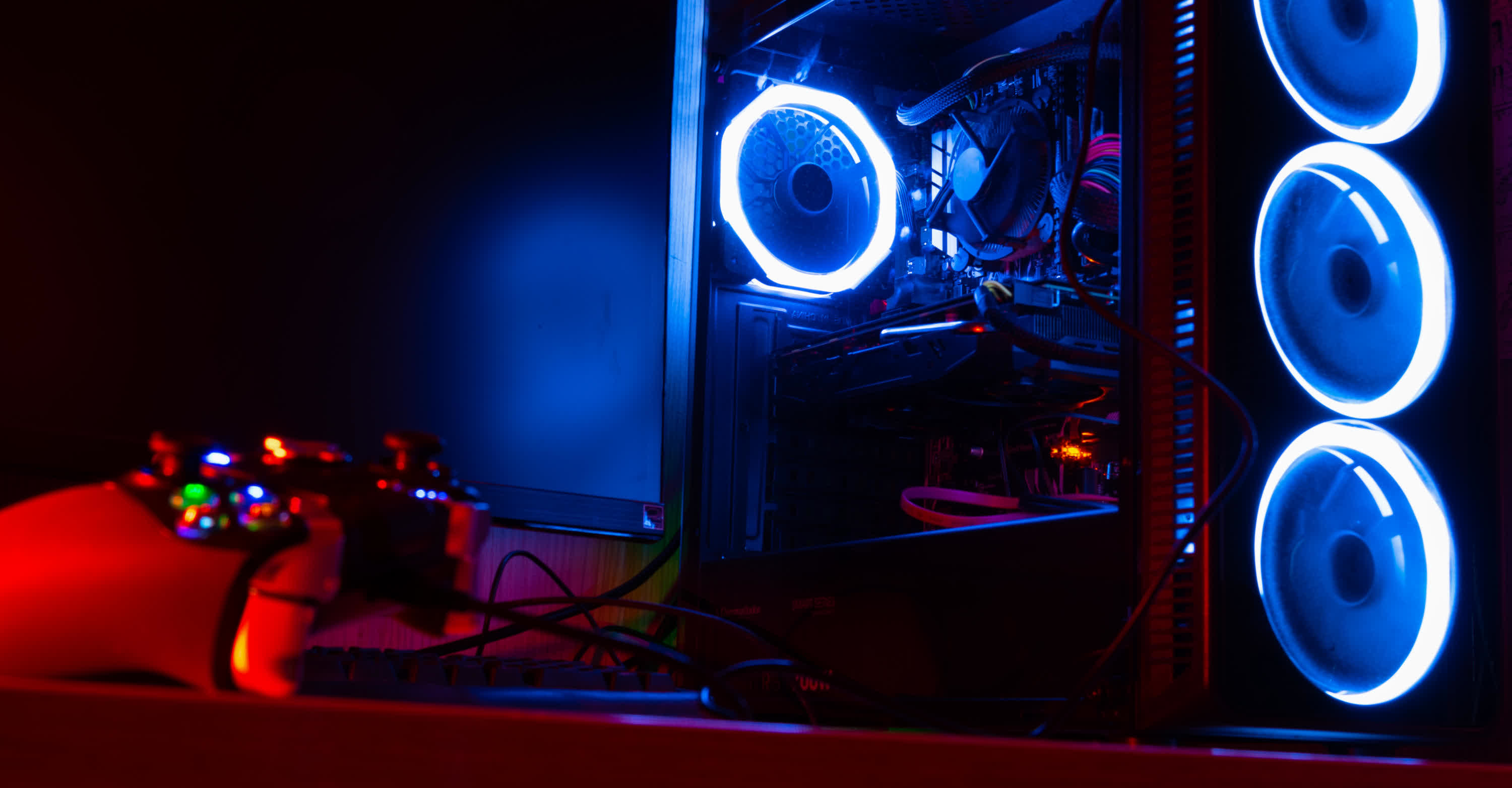In a world where a decent graphics card can cost the same as a new cutting-edge console, you'd be forgiven for thinking that $500 just isn't enough money to buy a PC and play games on it. But given that modern hardware is very capable, surely with some careful choices it must be possible to build something that can run some of the latest titles and old favorites?
With our thinking beanies firmly in place, we've gone through our reviews and online stores to see just if it can be done. Can you really build a PC for gaming for the same price as a new PlayStation or Xbox?
Pre-builds – just no
Let's start by removing one option entirely: pre-builds. These are computers that are already put together, sold en masse by companies such as Dell, HP, and Lenovo, as well as smaller independent firms (e.g. Digital Storm).
Yes, you can get a PC from them for way less than $500, but for gaming you shouldn't. The CPU will almost certainly be just a dual core offering, with just 4 GB of the slowest RAM possible. The hard drive will be nothing special and the performance of games will range from just about okay to utterly grim.
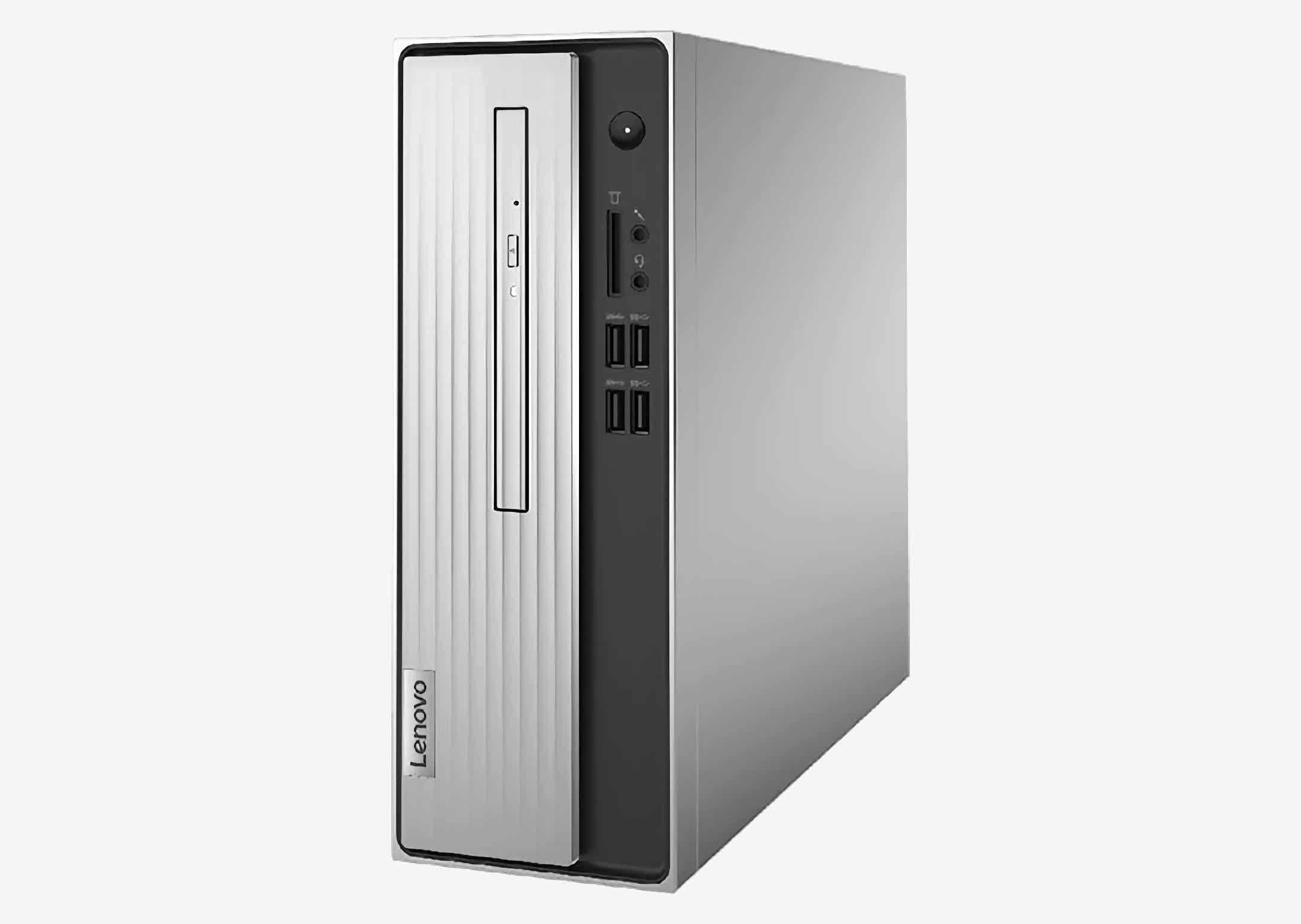
Don't think that getting a more reasonable base unit, such as the Lenovo IdeaCentre 5i for $449.99, is any better either – yes, there's more RAM and the CPU is a lot better, so games definitely will run better, too. But all you'll be left with is $50 to drown your sorrows with, and you'll run out of money long before you've managed to erase the memory of your poor decision.
Why? Well, no pre-build under $500 will come with a monitor, and while it's a not a must for an ultra-cheap gaming PC (consoles certainly don't come with a TV), we're trying to put together a full package here. What we consider a pretty good pre-build gaming PC looks like the HP Omen 30L, which comes with mostly off-the-shelf parts except for the motherboard, but that will set you back at least $900.
But what about laptops – they come with a screen, so are there any in our budget that are worth considering? The simple answer is no. All $500 laptops will have the same graphics performance issue as a cheap pre-built desktop, but they'll be even slower and have far less storage. For example, the Dell Inspiron 15 3000 laptop is perfectly okay for general use, but it would be a disappointing experience trying to play games on it.

The real reason for the disappointment is simple: you can get individual components that are faster or have more capacity/capability than those found in cheap prebuilds and laptops, and still stay in budget.
DIY is the way to go
Part of the reason why cheap pre-builds aren't good value for money (when it comes to budget gaming) is that you're paying for someone to fit everything together and install the software, as well as the warranty of the whole build. Why bother – do it yourself!
There's no nicer feeling than carefully clicking everything together (it's really not very hard at all), pressing the power button, and seeing your new creation spring into life. And any new parts that you buy will have their warranty, either from the retailer or directly from the manufacturer. So let's look at what parts you can get separately and still keep to budget. The first and most important element of the PC is going to be the choice of CPU. Ideally, it will have 4 cores as a minimum and, if possible, support multithreading.

Full graphics cards, even cheap ones, will take out a slice of your $500, so our base processor for this build will need to have an integrated graphics chip. These are always very basic, but there are two CPUs that are a viable option: AMD's Ryzen 3 3200G or the Ryzen 3 3400G. The former costs $99.99, has 4 cores (but sadly no multithreading), and has a clock speed range of 3.6 to 4.0 GHz. It's bigger brother, costing $50 more, has the same number of cores, but handles up to 8 threads at the same time and is clocked slightly higher (3.7 GHz to 4.2).
Another key difference is the graphics chip inside it: both CPUs have systems based on AMD's Vega GPUs. This design is a few years old now, but still quite capable and much better than the integrated GPU inside CPUs typically found in low-cost pre-builds and laptops. The technical specifications for the Ryzen's Vega chips are as follows:
| Feature | 3200G | 3400G | 3400G vs 3200G | |
| Compute units | 8 | 11 | 1.375x | |
| Shader Cores | 512 | 704 | 37.5% more | |
| TMUs | 32 | 44 | 37.5% more | |
| ROPs | 8 | 8 | Same | |
| Clock speed range | 300 to 1250 MHz | 300 to 1400 MHz | 12% higher at max | |
| Max pixel rate | 10.0 Gpixels/s | 11.2 Gpixels/s | 12% better | |
| Max texture rate | 40.0 Gtexels/s | 61.6 Gtexels/s | 54% better | |
| Max FP32 shader rate | 1.28 TFLOPS | 1.97 TFLOPS | 54% better |
When it comes to graphics, you want all of the above numbers to be as big as possible. The 3400G clearly contains the better GPU but the whole processor does cost 50% more. When we tested it last year, the gaming performance at 1080p was only acceptable when using low detail settings in games.
For competitive shooters and esports, this is less of a problem and many gamers choose such settings to maximize their effectivity anyway. But you're hoping for cutting edge, ray traced photorealism, then you're out of luck!

Unfortunately, we're on a super tight budget, and to save as much money as possible, we're actually going to select the Ryzen 3 3200G as our CPU – it comes with a reasonable heatsink and fan, so we don't need to pay for that, but it will be slower in games (anywhere from 12% to 54% down) than the 3400G.
For an alternative build where we don't include the price of the monitor, there's more room for a discrete GPU, which is very important for gaming. Ideally for this build, we'd have gone with something like the Ryzen 1600 AF which has no integrated graphics but costs just $85, but is no longer available. Instead we opted for the Ryzen 3 3100, which is also selling above its MSRP.
Next up is the system RAM. Ryzen processors work best when paired with two DIMMs of DDR4 memory to run in dual-channel mode. We've picked a 2 x 4 GB kit from Patriot, running at 3000 MT/s, for just under $38 on Amazon. More RAM would be ideal, but to remain on budget 8 GB will be sufficient for now.

The CPU and RAM need a motherboard and we've chosen the Asrock B450M-HDV, currently priced at $71.99 on Amazon. It's not the best one for overclocking, but it has plenty of features and a neat BIOS menu. It has a PCI Express x16 slot for a separate graphics card, built in audio, and plenty of sockets for storage drives and USB devices.
There are older models that are even cheaper such as the Biostar A320MH ($55.99), but our preferred option supports faster RAM and offers an M.2 slot for an NVMe SSD. The latter is too pricey for our budget at the moment, but they're falling in price all the time.
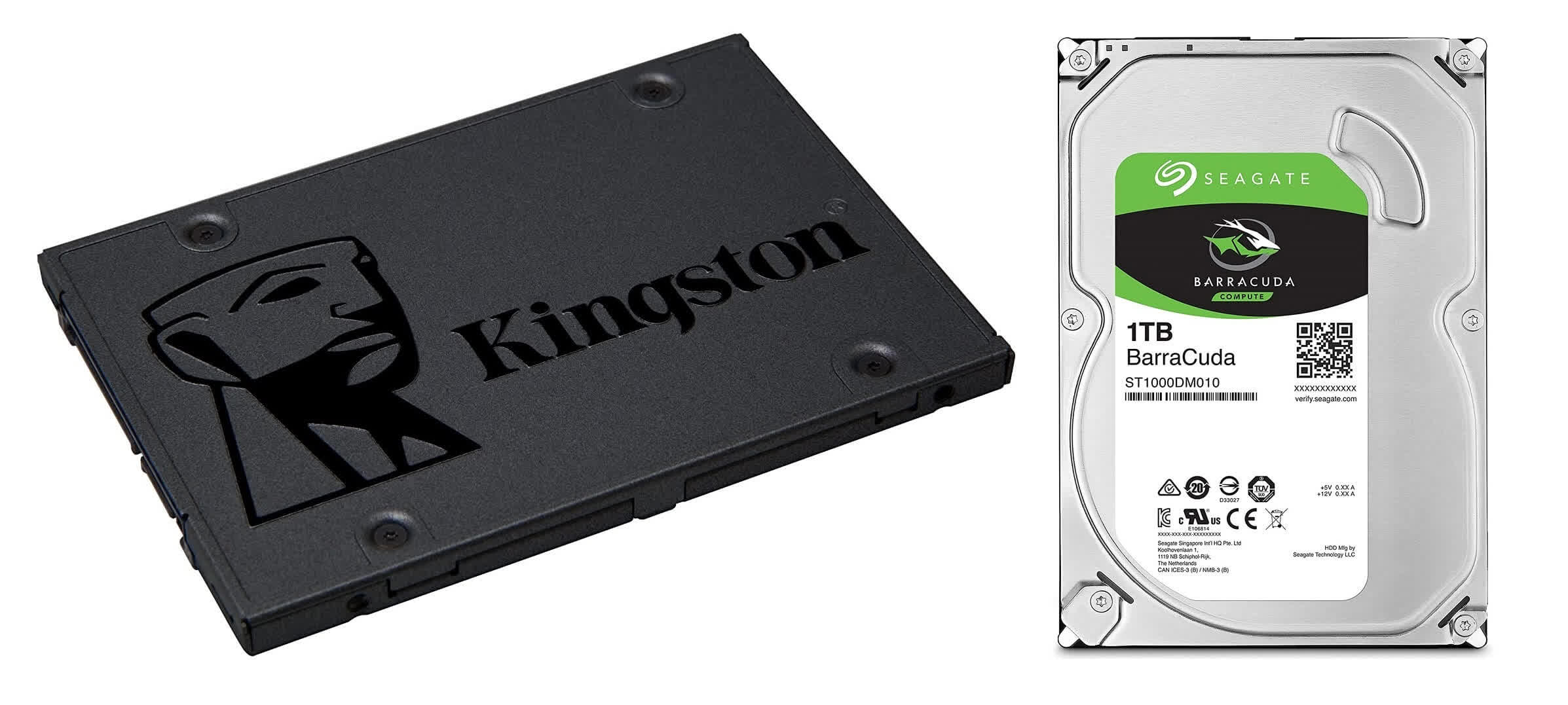
And speaking of storage, we're picking a Kingston 240 GB A400 SSD to house the operating system and applications, and a Seagate 1 TB Barracuda HDD for games – the former is less than $28 on Amazon, and the later is just under $50. They both use the SATA interface, to connect to the motherboard, but their performance will be more than a match for the rest of the system. Most budget pre-builds only provide a single HDD for everything, whereas our setup will ensure the PC boots quickly and has plenty of room for games.
One good alternative to the above could be opting for a single larger SSD, keeping the ultra affordable Kingston A400 SSD, the 1 TB model goes for $89.00, which would become the sole storage drive on your system for almost the same price. Or If you really wanted to go with an NVMe SSD, then Western Digital's 256GB SN750 is priced at $36.95 on Amazon.
All of these components will need a case to sit inside, a power supply to run them, and a keyboard and mouse to operate them. There is an enormous range of brands and models to choose from, and it can get all very subjective when picking such things.

In keeping within budget, we've gone for the DeepCool Matrexx 30 case, a Thermaltake Smart 430 W PSU, and NPET's G20 and M70 gaming keyboard and mouse – total price for all four items on Amazon comes to $108.96.
Yes, there are cheaper options available, but these are all well-made for the price and look good, too, although that depends on your thoughts on RGB lighting! It's always worth spending a little bit extra on the power supply unit, as a good one will help to keep the system stable during gaming, and even if the total wattage is only between 400 and 500 W, that will be enough for a future graphics card upgrade.
The difficult choices to make
So far, we've spent $396.33 of our budget, leaving $103.67 for two more items: an operating system and a monitor. Since we absolutely need the former to use our budget computer, let's consider our options for this first.
The default choice for most people would be Windows 10 Home, as it will support an enormous range of modern and old games. The only problem is that the full version costs $130 on Amazon, and we clearly don't have enough money left for that.
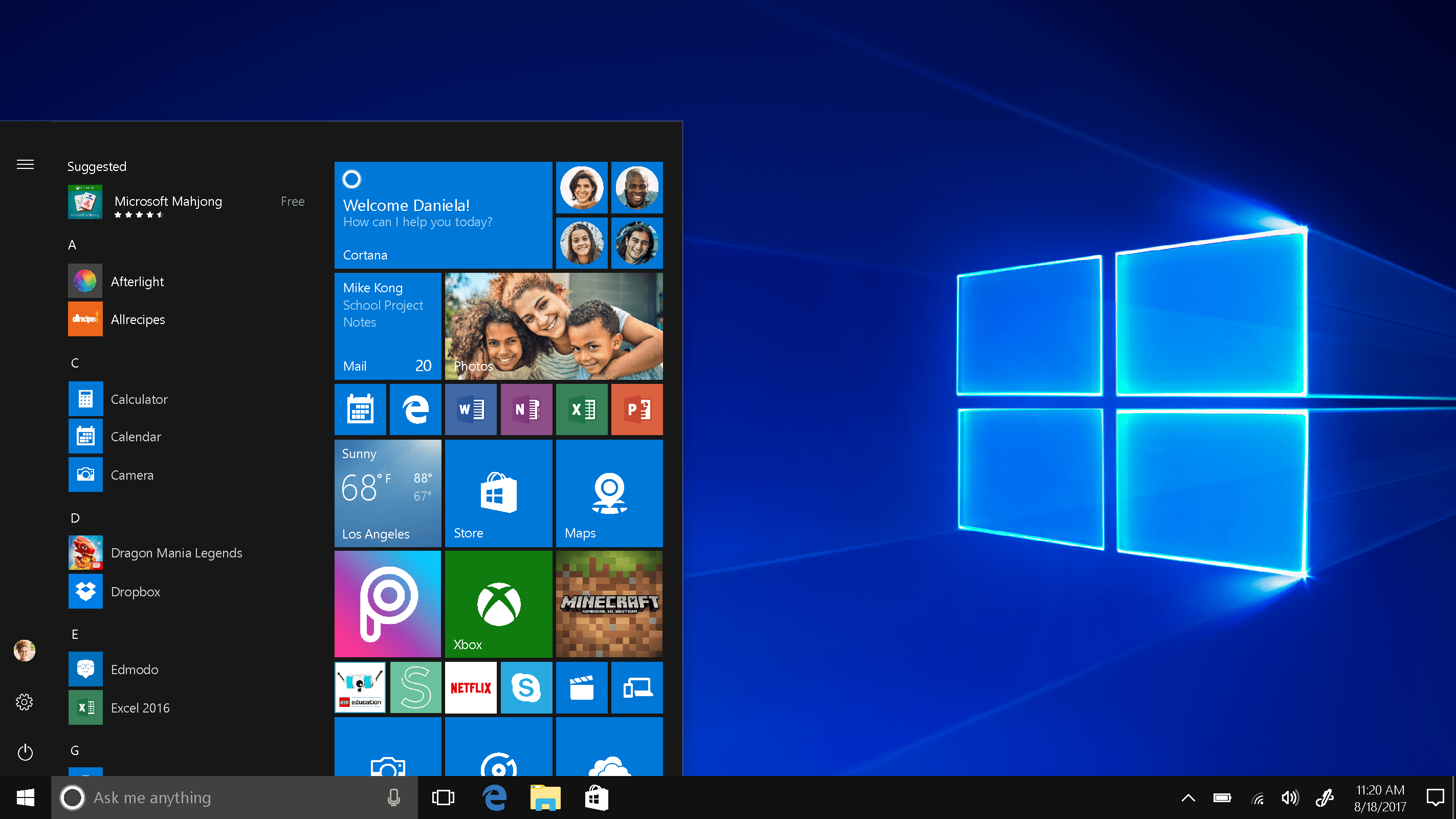
There are plenty of websites offering products keys for Windows 10 – you don't get a copy of the software, just a single license to use it. For example, Kinguin charges $37.83 for a single key, but why is it so much cheaper? Is it illegal?
The answer is 'probably not' as many organizations buy an excess of product keys, and then sell them off; the likes of Kinguin buy a batch of these and resells them again on an individual basis. Sometimes it requires a quick phone call to Microsoft's support division to activate the key, but once done you'll be good to go. Unfortunately, other sites may try to sell you keys that are no longer valid (either on purpose or through negligence). There's no easy, foolproof way of telling, and that's the risk you have to take.
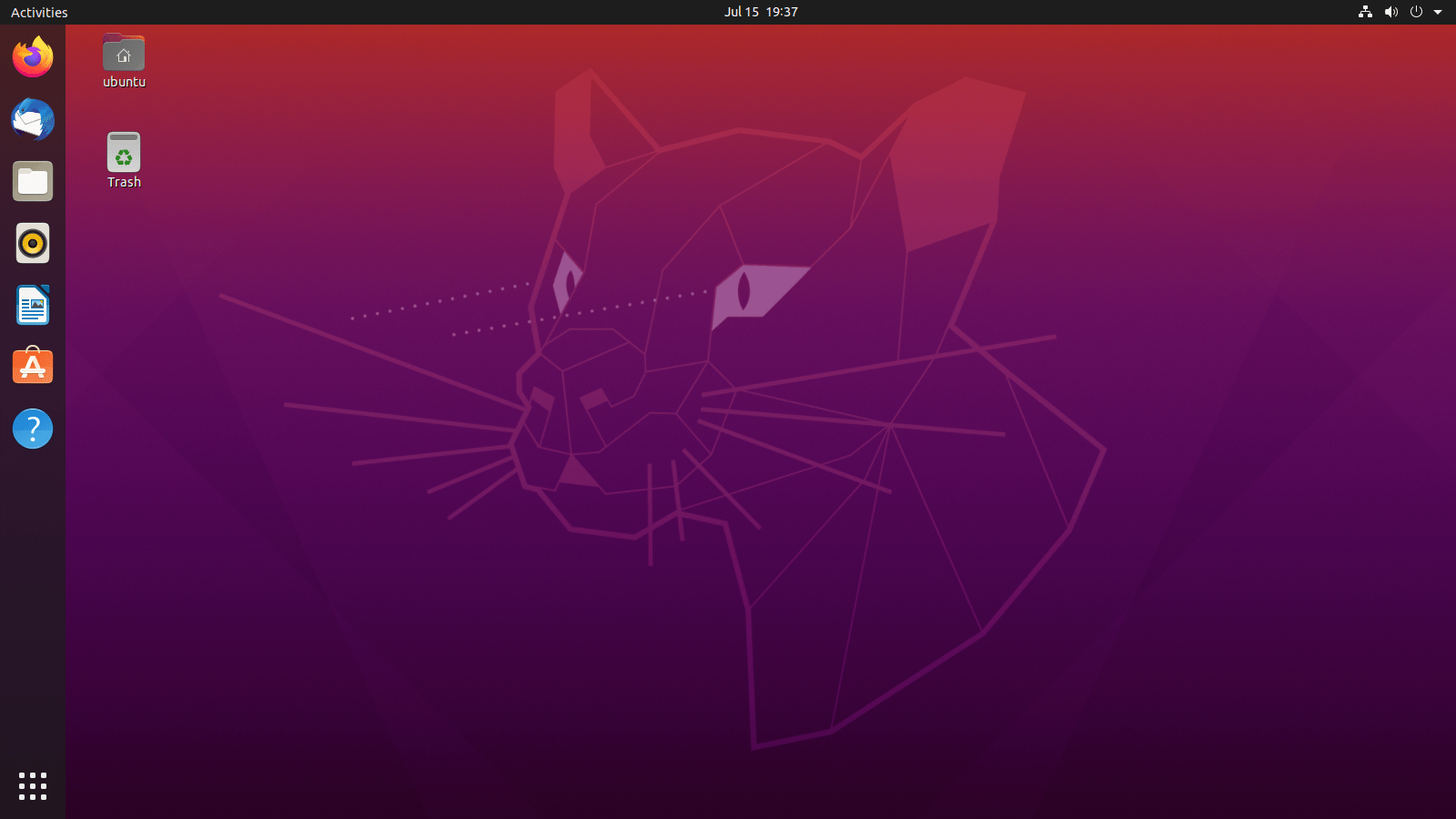
Of course, you don't have to use Windows – Linux-based operating systems are free and many support a large library of games. Ubuntu is very popular, it's easy to set up, and well supported. Another alternative to consider is Valve's SteamOS. However, unlike Ubuntu, it's not as simple to install and its sole focus is playing games through Steam. It is free, of course, and that alone makes it worth considering.
We're going to stick with Windows 10 for our budget build, taking a gamble with a low price key around the $30 region. All of which leaves us with a few quarters over $73 to spend on a monitor.
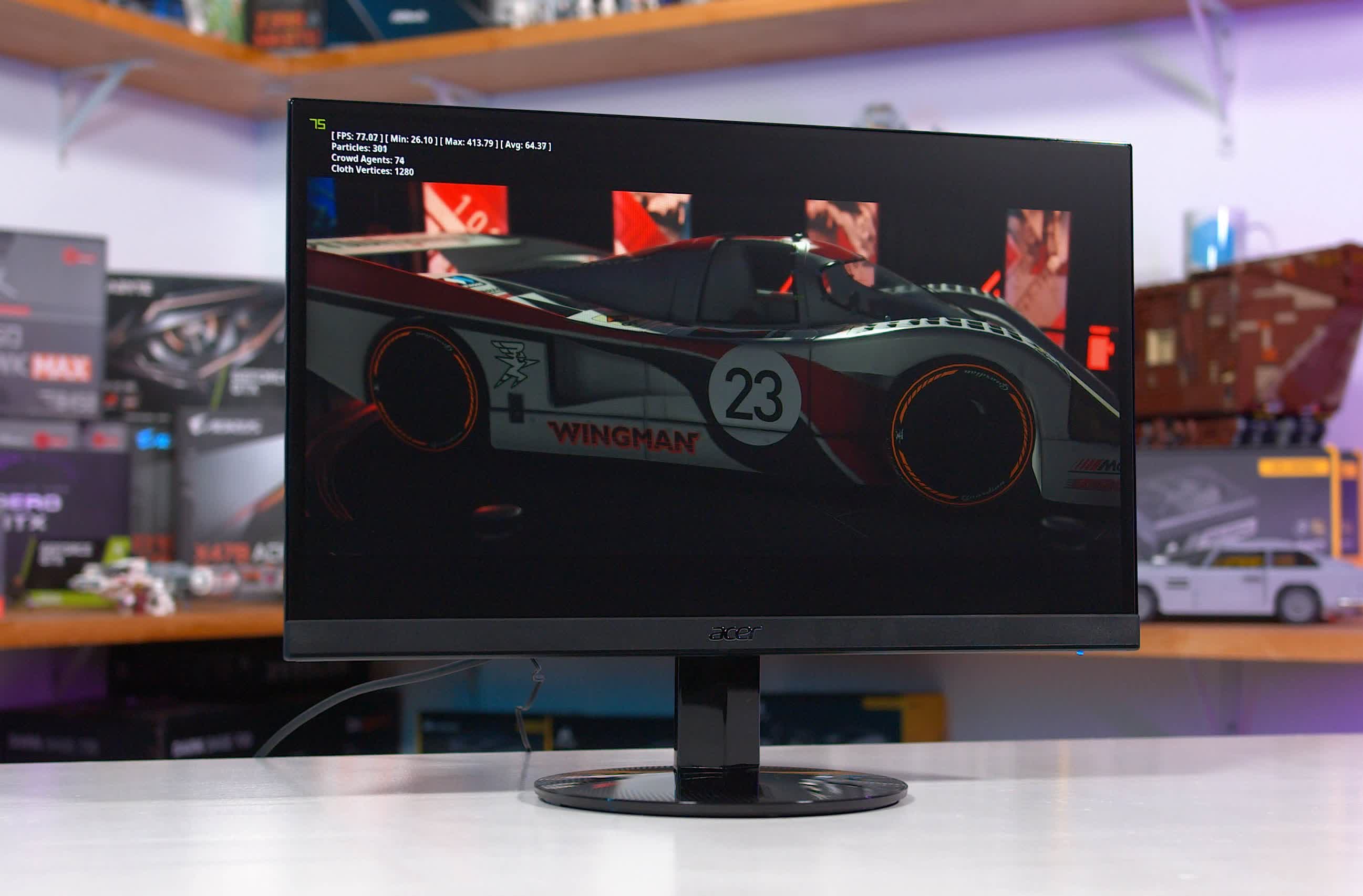
Unfortunately, that's not much money, even for a cheap screen. We managed to find something that fit our budget on the Acer K202HQL ($69.99) but a paltry 19" TFT-TN panel with a 1600 x 900 resolution is just too poor to consider. Alternatively, one of the cheapest and more popular monitors on Amazon is the Acer SB220Q which we reviewed in detail last February. It goes over budget by $20, but it does get you a decent 1080p display on a 21.5" panel. Honestly it's not great for gaming, but is serviceable.
But what if you just don't bother with a monitor? What if you wanted to plug the computer into a TV or had a spare one lying around? The Asrock motherboard comes with a HDMI output, so hooking it all up shouldn't be an issue. All you'd need is a long enough cable and we've got plenty of budget left over for one of those.
In fact, by skipping the monitor from the build, the remaining dollars could be spent on a graphics card which would be the #1 top upgrade for a gaming build. A GeForce GT 1030 only costs $75.99, but it's not really worth it. You'd be better off buying the Ryzen 3 3400G and giving the processor a gentle overclock. And the money left over will get you some tasty snacks to munch on while building the system!
If going for a discrete GPU, the very least you will want to spend on would be the good old Radeon RX 560 which unfortunately is going for $110 new. New low-end hardware is unusually expensive at the moment compared to what we saw a year ago limiting our options.
For our pure CPU/GPU build option with no monitor we managed to find a Radeon RX 570 selling for $135, which seems to be as good as it gets at the moment. The more GPU you can pack, the better gaming performance you will achieve.
Putting It Together #1: Base Complete System
| Component | Product | Price | |
| Processor | Ryzen 3 3200G | $100 | |
| Motherboard | Asrock B450M-HDV | $72 | |
| Memory | Patriot Viper DDR4 2 x 4GB | $38 | |
| Graphics / Sound | Integrated | $0 | |
| Storage | Kingston 240GB A400 / 1 TB HDD | $79 | |
| Monitor | Acer SB220Q | $90 | |
| Case + PSU + Input | DeepCool case, Thermaltake PSU, K&M | $109 | |
| Software | Operating System | $30 | |
|
System Total
|
$518 | ||
Realizing that the GPU is the #1 priority on a gaming PC, and some of you probably will disregard a cheap monitor and possibly use something you have on hand, we added the best performance/value GPU we could.
Likewise, replaced the 3200G processor in favor of the more powerful Ryzen 3 3100 that has no integrated graphics. Pricing just seems a tad high at the moment, we hope as worldwide supply chains normalize in the coming months, we can revisit the topic and get away with a similar system for less.
Option #2: Pure CPU/GPU play, no monitor
| Component | Product | Price | |
| Processor | Ryzen 3 3100 | $115 | |
| Motherboard | Asrock B450M-HDV | $72 | |
| Memory | Patriot Viper DDR4 2 x 4GB | $38 | |
| Graphics | Radeon RX 570 | $135 | |
| Storage | Kingston 480GB A400 | $47 | |
| Monitor | None | $0 | |
| Case + PSU + Input | DeepCool case, Thermaltake PSU, K&M | $109 | |
| Software | Operating System | $30 | |
|
System Total
|
$546 | ||
Used, not abused
We've purposely not considered second hand parts for our $500 build for one simple reason: the cost for a lot of items, even those 4 or 5 years old, is still surprising high. AMD's Ryzen 3 2400G isn't that much different to the 3400G, despite being an older model, yet prices on eBay aren't that much lower than the newer chip.
Choosing models from 2010 to 2015 yields more promising results. For example, a Core i5 4690 can be picked up for around the $80 mark, and there will be plenty of cheap LGA1150 motherboards and DDR3 memory available, too. Although such a processor won't be faster than a Ryzen 3 3400G, the extra funds could go towards a decent graphics card.

Brand new Radeon RX 560 cards can be picked for $110 and up, the GeForce GTX 1050 Ti is usually under $160, and the faster RX 570 is selling for around $140. Clearly the higher you can go, the better.
Those prices mean you would have to get a second hand CPU, motherboard, and RAM for a total of $160 to $200. That might seem like a decent amount of money to work with, but the parts probably won't come with any warranty, and there's absolutely no guarantee that they haven't been abused in the hands of their former owners.
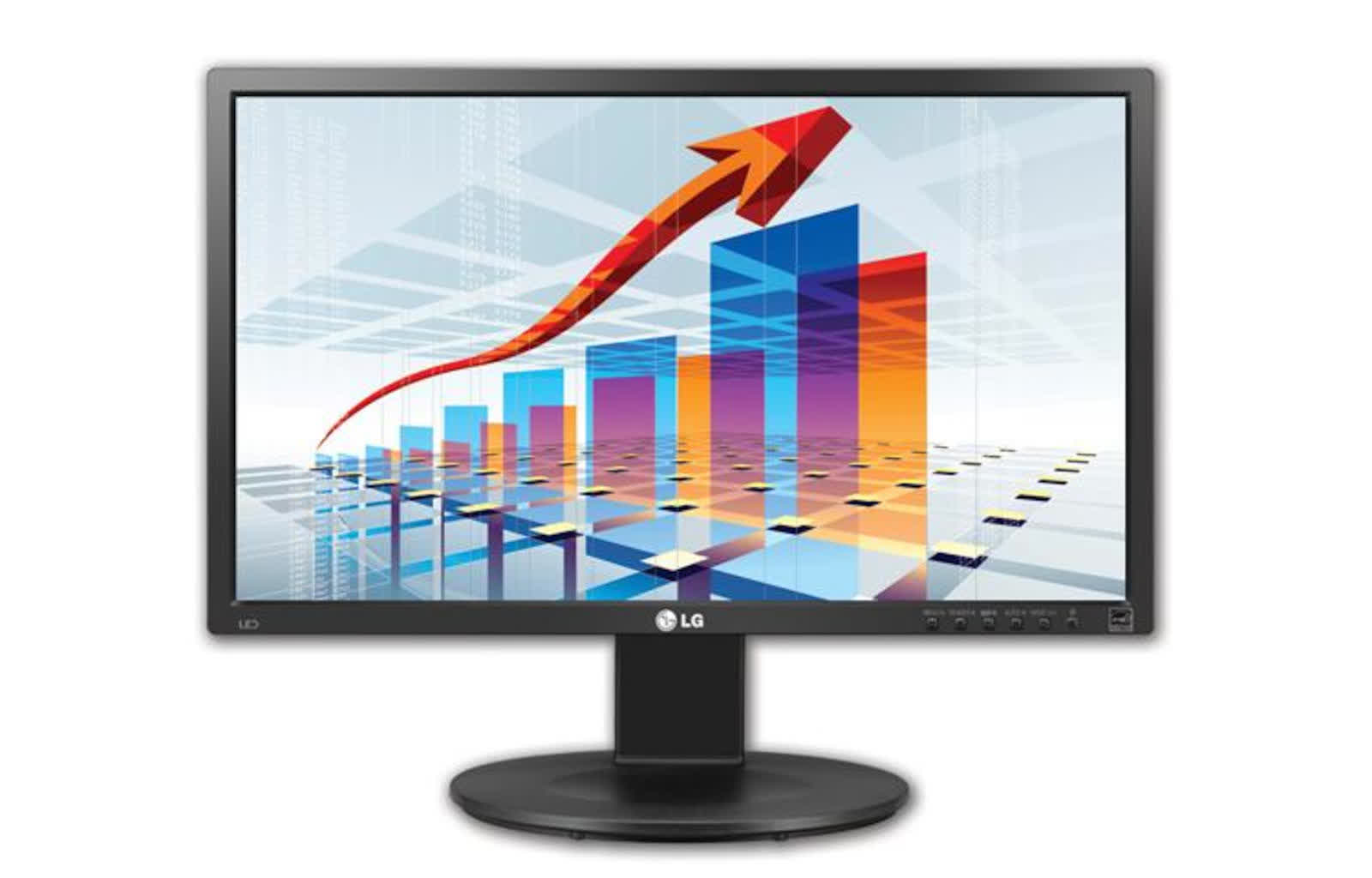
One area that going second hand may be worth considering is the monitor. There's a wealth of used 1080p models on the likes of eBay, thanks to prices for 1440p models dropping in recent years. Many of them being 22" to 24" in size.
Sticking with a Ryzen 3 3200G/3400G build gives you a base platform that's perfect to expand upon, as and when funds become available – the motherboard will support a wide range of faster processors, the case has space for a reasonable graphics card, and the RAM will be more than enough for years to come.
To console or not to console
So, can we really build a new gaming PC for $500 – including the monitor, keyboard, operating system, etc? The answer is yes but there are obvious caveats to this: namely the graphics performance of the Ryzen 3 3200G and how much you're willing to put up with a sub-$100 monitor.
All together, these choices mean that you'll be playing at 1080p and mostly with low detail settings (some titles may let you tweak things to improve the visuals). Is this going to be better than playing the latest games on a large 1080p-or-higher TV, with amazing graphics, using a PlayStation 5 or Xbox Series X?
As much as it pains us to say it, clearly not. If that's what you're looking for, then the decision is simple: the newer consoles are the superior and sensible option. After all, these have far more powerful CPUs and graphics chips, as well as ultra fast RAM and storage.
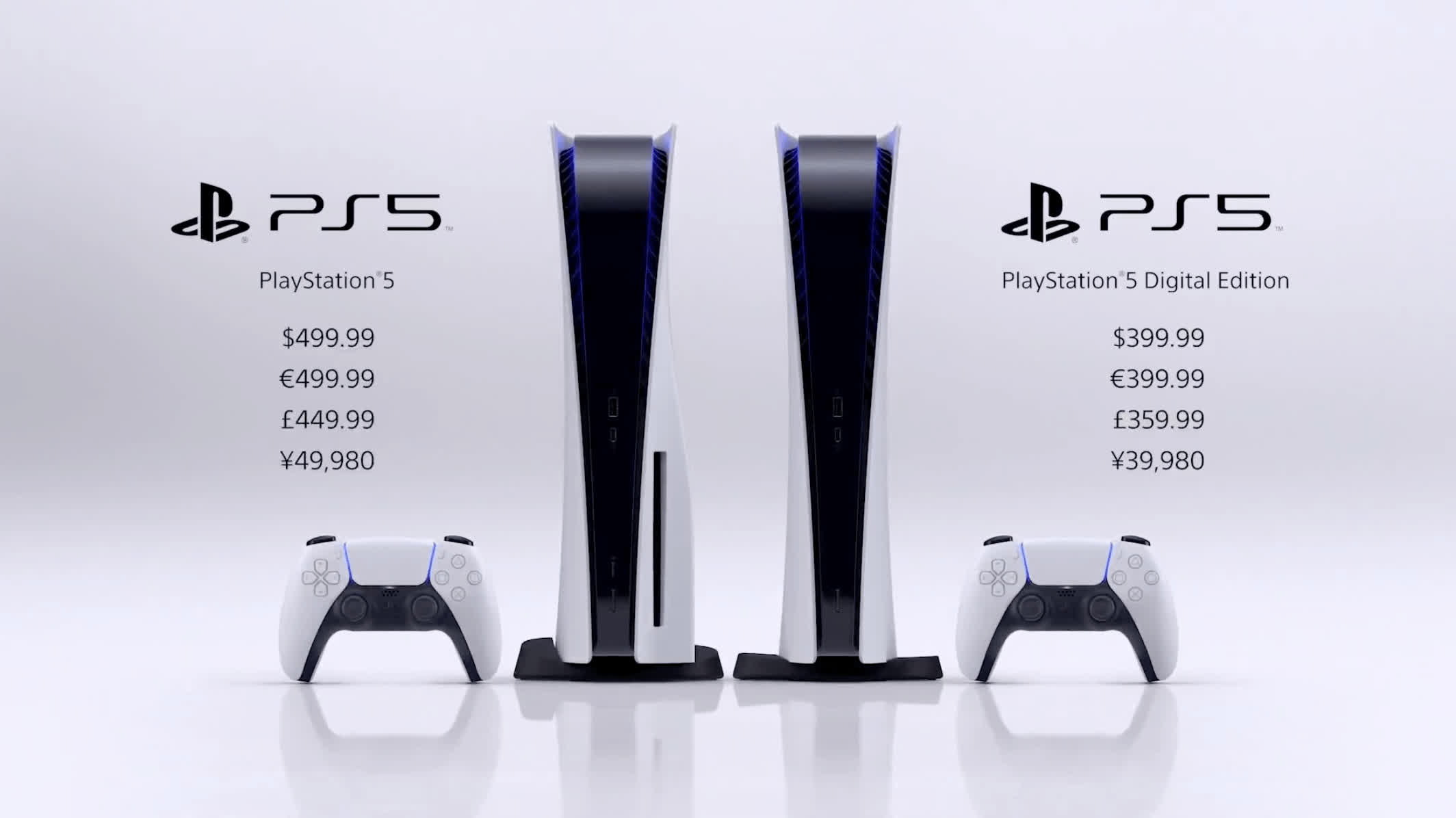
But leaving aside the raw power of these consoles, a cheap gaming PC will also be perfectly fine for handling day-to-day productivity and working on school projects. And many games are not only better suited to computers, they're only available on that platform.
Titles such as Crusader Kings II, Disco Elysium, and Into the Breach will provide you with countless hours of fun – check out our selection of 25 games that will run fine on a budget PC. Great gaming isn't always about frame rates, graphics, and high resolution: it's about the enjoyment it gives you and a cheap little PC, built by yourself, will give you plenty of it. Not to mention, there's also plenty of free games you can play on PC, too.
So if you don't mind looking at basic graphics, then $500 will indeed get you a gaming PC. It won't be fast, use fancy water cooling, or have the latest graphics technology, but it'll be fun to build and it'll be yours!
Shopping Shortcuts:
- AMD Ryzen 3 3200G on Amazon, Newegg
- AMD Ryzen 3 3400G on Amazon, Newegg
- AMD Ryzen 3 3100 on Amazon, Newegg
- Patriot Viper DDR4 2 x 4GB on Amazon, Newegg
- Asrock B450M-HDV on Amazon, Newegg
- Kingston 240GB A400 SSD on Amazon, Newegg
- Seagate 1TB Barracuda HDD on Amazon, Newegg
- DeepCool Matrexx 30 on Amazon, Newegg
- Thermaltake Smart 430 W PSU on Amazon, Newegg
- NPET G20 Compact Gaming Keyboard on Amazon, Newegg
- NPET G70 Wired Gaming Mouse on Amazon, Newegg
- Acer SB220Q 21.5" monitor on Amazon
- LG 24M47VQ 24-Inch LED on Amazon
- Radeon RX 560 on Amazon, Newegg
- GeForce GTX 1050 Ti on Amazon, Newegg
Masthead credit: Gabriele Maltinti
